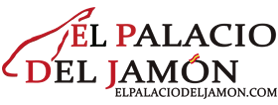Tips when cutting ham
Very well, you have already bought your ham or shoulder ham and you have it perfectly placed in the kitchen. Now comes the moment of truth. Take the ham knife here we come.
Know the parts of the ham and the shoulder
It is important that you know the parts into which a ham is divided.
The mace is the most important part of the piece, the largest and very tasty. It is the one that is attacked with the leg with the hoof up.
The babilla or contramaza is the opposite part to the mace
The point is the opposite part of the hoof. Where the meat is tastier than the ham. Only in the ham.
Hock or knuckle is the part that goes from the mace to the hoof where the meat is tougher. Ideal for taking out taquitos.

What do I need to start?
At a minimum you should have these three basic utensils:
Support for hams or shoulder hams.
At least two knives, one short and strong to remove the skins and rinds, and another thin, elongated and flexible for slicing.
A clean cloth to remove the grease from the knife if it looks very impregnated.

Preparation
Place the part on the support. If you are going to consume it in a short time, we recommend that you place it with the hoof facing up.
Make a bias cut in the cane, called a "brake", with the short knife.
First, peel the upper part of the piece from the tip to the brake and then the sides, removing the rind and rancid bacon.
Take slices of bacon until you discover the lean. Do not throw away the clean stale bacon (the yellow part) because we will use it to cover the ham when we stop cutting.
Be careful!
It is important when cutting not and the hand of the knife must be careful with the other hand is not in front of the cut.
We start to cut
Cut very thinly into slices of about 4 or 5 cm at most, the ideal size for a slice of tapas.

Try to cut as straight as possible and forward to avoid possible cuts and also in this way you will avoid the usual curved effect in ham cuts when pulled towards one. It is only cut backwards at the moment that you have a protection of the bone near the cut of your slice.
The normal thing is that if you cut forward you will cut 90% of the ham properly and safely and 10% towards you.
The movement of the knife must be fast enough and with a back and forth movement of about 5 or 6 cm and that you do not notice that you have to exert force to cut the slice.
Make the most of ham
To make the most of the ham, when you finish cutting a slice, if you are reaching the bone, you should never pull the knife up, otherwise you will gradually reach a curved effect that you will not be able to straighten later. When you get to the bone, take the knife out from the side of your slice and make a cut between it and the bone, so that the bone is completely clean of ham. That same cut should be, whether you cut forward or backward. The cut must be as rectilinear as possible until you reach the central bone of the leg, once there you must rush the ham laterally to later be able to join that cut with the one on the opposite side once the ham has been turned over.
Once you see that the ham that is stuck to the bone does not look like tapas slices, then use the small boning knife and remove any remaining ham from the bone in order to be able to use those remains in small cubes of ham that you will later cut on a table and use it as a complement to your dishes, stews, salads...

Soon you will find here, on our blog, photos and videos explaining these aforementioned techniques.
You can also sign up for an introductory course on cutting ham like the ones we regularly schedule at the store.


